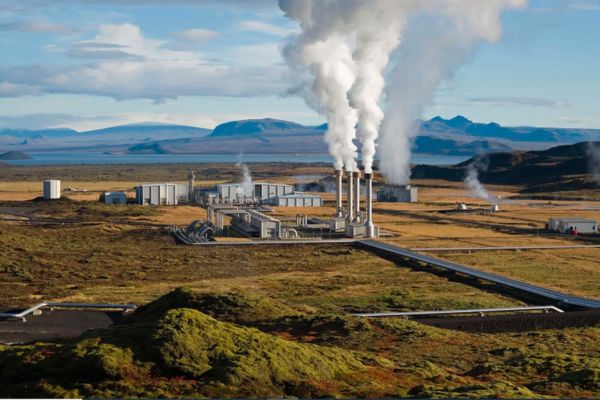The escalating demand for reliable and environmentally conscious energy is intensifying the focus on clean power solutions, with renewable sources widely regarded as the most promising options. Among these, solar and geothermal energy are particularly notable for their inherent availability, and in the case of geothermal, its independence from variable environmental conditions. Geothermal energy (GE) itself is defined as the thermal energy generated and stored within the Earth, a continuous resource derived from the planet’s formation and the ongoing radioactive decay of minerals in its crust. This natural subterranean heat is harnessed for power, especially from high-temperature sources (above 150°C), which have become popular for electricity generation. Geothermal power is distinguished by its exceptional reliability and consistent output compared to other renewables, and it offers direct-use potential across a temperature spectrum of 50°C to 350°C found underground.
Globally, the push for dependable, eco-friendly power has heightened interest in renewable technologies. While solar and geothermal energies are attractive due to their abundance and regenerative nature, they each present challenges: solar power is often inefficient and weather-dependent, whereas geothermal energy can be less effective when sourced from lower temperatures. To address these limitations, hybrid systems integrating solar and geothermal technologies have emerged as a highly effective strategy, promising continuous power, reduced investment costs, and improved overall system efficiency.
Research into these combined systems, aiming for enhanced efficacy and sustainability, began in the mid-1970s. Contemporary research has advanced to experimental systems that not only produce electricity but also repurpose waste heat for applications like water purification and air conditioning. For example, some configurations merge solar collectors and geothermal reservoirs with technologies such as membrane distillation or reverse osmosis for water treatment, while others link renewable heat with sophisticated CO₂-based refrigeration cycles.
A key consideration for such hybrid systems is the need for dependable energy storage, crucial for bridging periods without sunlight and for augmenting geothermal output when conditions are suboptimal. Hydrogen has become a preferred storage medium owing to its high energy density, environmental compatibility, and suitability for polymer electrolyte membrane (PEM) fuel cells. Proton Exchange Membrane Electrolyzers (PEME), for instance, can use surplus renewable energy to create hydrogen from water. This hydrogen can then be reconverted to electricity via Proton Exchange Membrane Fuel Cells (PEMFCs), which are efficient, operate at low temperatures, and yield only heat and water as byproducts, making them well-suited for sustainable power. Recent studies also indicate the feasibility of incorporating hydrogen production into multi-generation systems capable of concurrently supplying electricity, heat, and cooling.
Furthermore, advancements in machine learning and artificial intelligence are facilitating more precise and rapid optimization of hybrid systems. Algorithms like multilayer perceptrons (MLP), extreme gradient boosting (XGBoost), and convolutional neural networks (CNN) are employed to predict system behavior, identify optimal design configurations, substantially decrease computational demands, and boost system efficiency. Therefore, the integration of solar and geothermal energy with AI-optimized hydrogen storage presents significant potential for creating resilient, cost-effective, and environmentally sound power systems.













